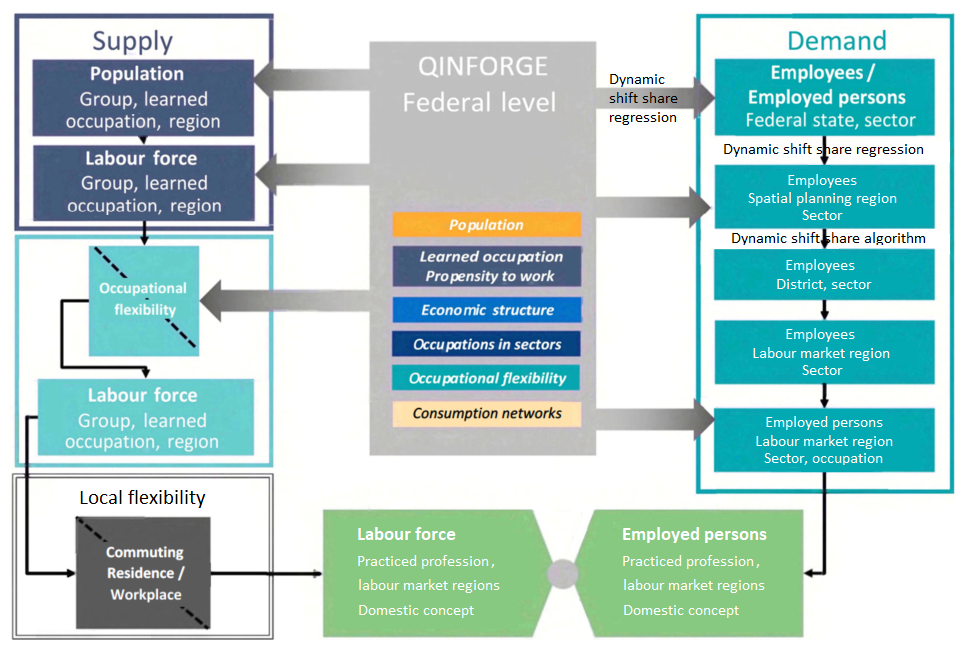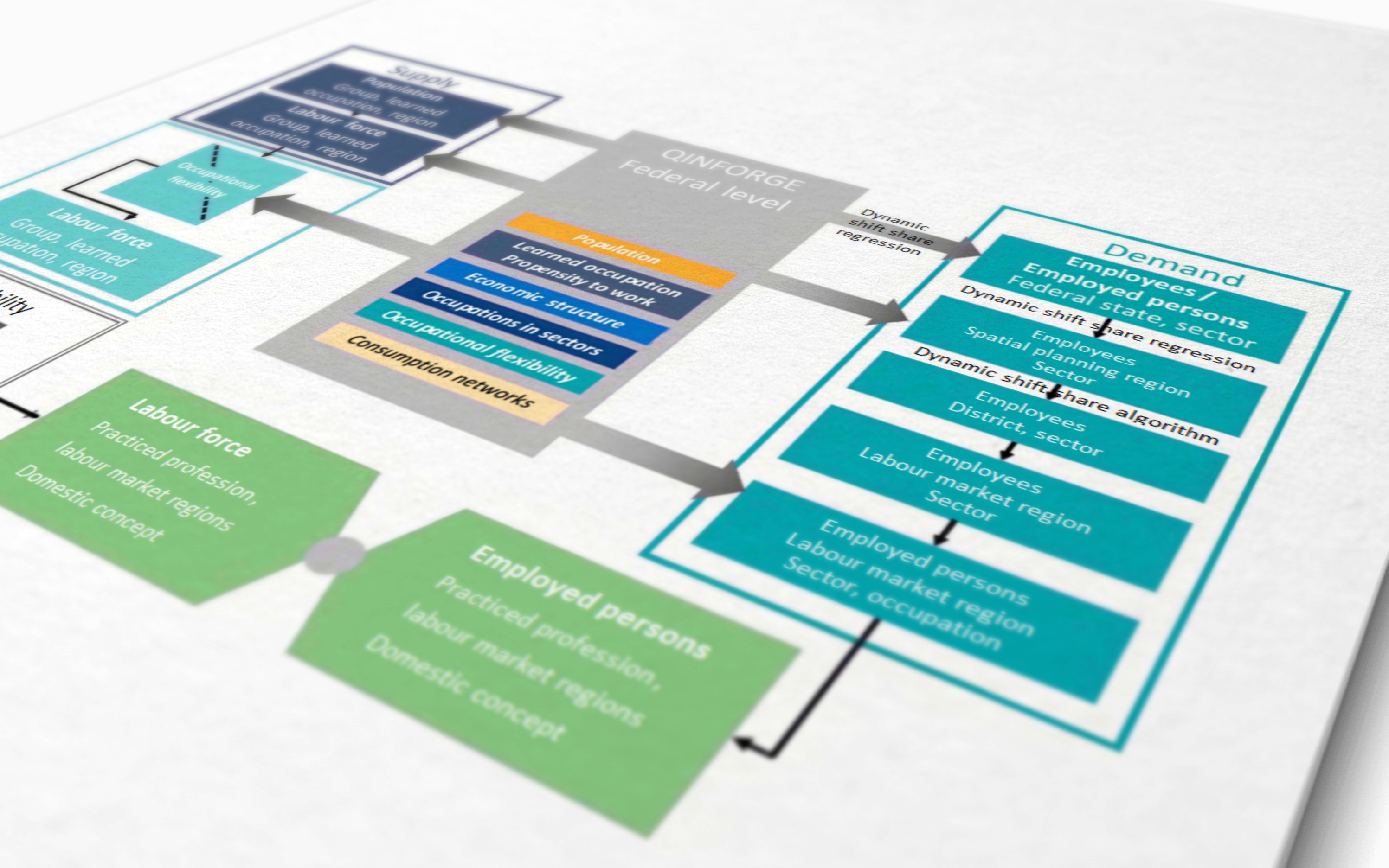QMORE
In QMORE, the demand and supply sides of regional labor markets are modeled. Each sector of the economy in each region is placed in the context of different regional and superordinate influences.
The data basis for the QMORE model is formed by the national accounts, the process data of the employment history of the Federal Employment Agency and the microcensus. The link to QINFORGE provides the connection to general framework conditions and superordinate influences. The regionalization is top-down. As a result the federal results are the drivers of regional dynamics. Economic strength was determined at the federal level. For the regional representation of labor demand, different shift-share approaches are followed, which take into account general industry-specific trends as well as regional disparities. The projection of the demand side of the labor market is made for federal states, labor market regions, spatial planning regions and counties.
For the projection of the supply side of the labor market, the projection of population trends, their propensities to work and their occupational flexibilities are decisive. Due to the deep regional breakdown, commuting movements constitute a significant variable, which consequently have to be modeled. Thus, the labor force is calculated according to the national and domestic concepts of the national accounts. The supply side of the labor market is modeled only for federal states and labor market regions. For this region, comparisons of labor force and employed persons by occupation can be made and thus bottlenecks can be identified.

Selected Publications
Projects


